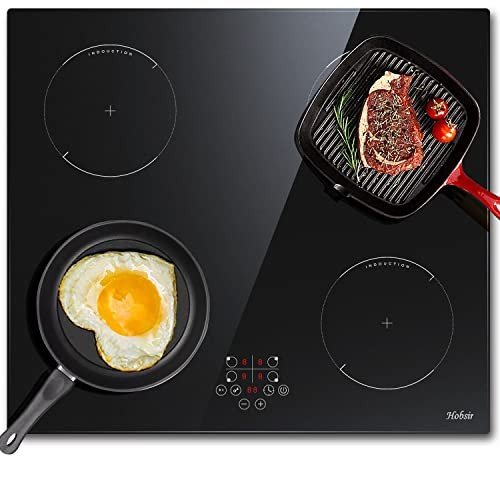Do Not Believe In These “Trends” About Hobs And Ovens
Understanding Hobs and Ovens: A Comprehensive Guide for Cooking Enthusiasts
The kitchen is typically considered as the heart of the home, where cooking creations come to life. 2 necessary parts of any kitchen are the hob and the oven. While they are both essential for food preparation and cooking, many property owners might not fully understand the differences, performances, and numerous types readily available in the market today. In this article, we will check out these home appliances in information, assisting you make informed choices for your cooking requirements.
Tabulation
- What is a Hob?
- 1.1 Types of Hobs
- 1.2 Benefits of Different Hob Types
- What is an Oven?
- 2.1 Types of Ovens
- 2.2 Benefits of Different Oven Types
- Selecting the Right Hob and Oven for Your Kitchen
- Regularly Asked Questions (FAQs)
- Conclusion
What is a Hob?
A hob, commonly referred to as a cooktop, is a cooking surface that you place pots and pans on to prepare food. It includes a series of heating elements and is frequently installed on counter tops. In modern kitchens, hobs come in numerous styles, technologies, and functionalities.
1.1 Types of Hobs
There are numerous types of hobs offered in the market:
Type
Description
Gas Hob
Utilizes gas burners for cooking, offering precise temperature control.
Electric Hob
Runs using electrical heating aspects, commonly seen in strong or radiant types.
Induction Hob
Utilizes electromagnetic fields to heat pots and pans directly, promoting energy effectiveness.
Ceramic Hob
Functions a smooth glass top, utilizing electric coils beneath the surface.
Solid Plate Hob
Conventional electric hobs with exposed metal plates that warm up.
1.2 Benefits of Different Hob Types
Gas Hobs:
- Quick heating and cooling.
- Visual flame control for accurate cooking.
Electric Hobs:
- Even heating; perfect for simmering and boiling.
- Easy to clean, specifically flat surfaces.
Induction Hobs:
- Energy-efficient as just the pot heats up.
- Safety functions, such as automatic shut-off.
Ceramic Hobs:
- Attractive aesthetic appeals with a smooth finish.
- Even surface areas for easy cleansing.
Solid Plate Hobs:
- Cost-effective and long lasting.
- Helpful for basic cooking requirements.
What is an Oven?
An oven is a kitchen home appliance utilized for baking, roasting, and broiling food. Ovens can be standalone units or built into kitchen cabinetry, supplying numerous cooking techniques that can enhance or change active ingredients.
2.1 Types of Ovens
Comparable to hobs, there are numerous types of ovens, each with its advantages:
Type
Description
Conventional Oven
Operates with heating aspects, ideal for baking.
Convection Oven
Utilizes fans to circulate hot air, cooking food equally and rapidly.
Microwave
Cooks food using electromagnetic radiation; suitable for reheating.
Steam Oven
Uses steam to prepare food, preserving wetness and nutrients.
Wall Oven
Built into the wall, providing convenience and aesthetic appeal.
2.2 Benefits of Different Oven Types
Traditional Ovens:
- Simple to utilize without any complex settings.
- Versatile for various cooking approaches.
Convection Ovens:
- Faster cooking times due to air flow.
- Boosted browning and crisping for baked products.
Microwave Ovens:
- Quick cooking or reheating of food.
- Energy-efficient for low-volume cooking.
Steam Ovens:
- Health-conscious cooking that keeps nutrients.
- Excellent for baking bread and cooking vegetables.
Wall Ovens:
- Convenient placement; saves area.
- Less bending needed to gain access to cooking dishes.
Selecting the Right Hob and Oven for Your Kitchen
When choosing a hob and oven, elements such as space, cooking design, and personal preferences need to be considered. Here's an easy guide to assist you select:
Factors to Consider
- Cooking Needs: Evaluate your cooking routines. Do you typically bake, or is stovetop cooking more common?
- Space Availability: Measure your readily available kitchen area. Some hobs or ovens may need more room than others.
- Fuel Type: Decide in between gas and electric, based on schedule and individual choices.
- Budget plan: Determine what you're ready to invest and find alternatives within that variety.
Quick Tips
- Prioritize Efficiency: Look for energy-efficient models to reduce long-term expenses.
- Read Reviews: Explore user reviews to collect opinions on efficiency and dependability.
- Consult Professionals: Seek advice from kitchen style professionals when planning your layout.
Regularly Asked Questions (FAQs)
1. What is the difference between a hob and an oven?
A hob is a cooking surface usually for stovetop cooking, while an oven is an enclosed space used for baking, roasting, and broiling food.
2. Can I use any pot on an induction hob?
No, induction hobs need magnetic pots and pans. Stainless-steel and cast iron pots work, however non-magnetic materials like aluminum will not.
3. How do stove vary from conventional ovens?
Convection ovens use fans to circulate hot air for even cooking, whereas traditional ovens do not have this function.
4. Is it possible to have both a hob and oven as a single unit?
Yes, there are variety cookers that integrate a hob and an oven within one device, using an extensive cooking option.
5. How do I tidy my hob and oven?
Most hobs and ovens have recommended cleansing methods depending on their materials. Fan Oven Sales is a good idea to speak with the maker's guidelines for the best practices.
Understanding the distinctions in between hobs and ovens is vital for anybody wanting to optimize their kitchen space or improve their cooking abilities. By understanding the numerous types, their advantages, and how to pick the right ones for your needs, cooking can end up being a more enjoyable and effective experience. Whether Fan Oven Sales are an experienced chef or a newbie cook, the ideal mix of hob and oven can elevate your cooking productions to new heights.
